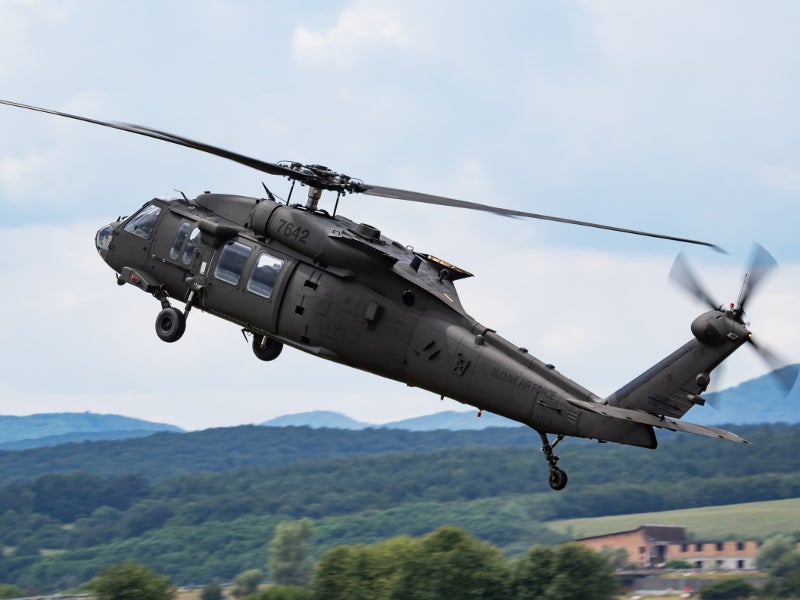Navigating Success: UH 60 Helicopter Upkeep Ideal Practices
Navigating Success: UH 60 Helicopter Upkeep Ideal Practices
Blog Article
Comprehending the Mechanics and Engineering Behind Uh 60 Helicopters
The UH-60 helicopter, typically referred to as the Black Hawk, stands as a peak of modern rotorcraft technology, symbolizing a mix of robust design and detailed technicians. From its creation to its existing versions, the development of this aircraft showcases a fusion of innovation and practicality. As we peel back the layers of the UH-60's design, a globe of intricate systems and meticulous engineering emerges. Understanding the technicians and engineering behind this flexible airplane introduces a world where precision meets power, and where each component plays a vital function in attaining trip.
Background of UH-60 Helicopters
The history of UH-60 helicopters traces back to the late 1970s when the USA Army sought a innovative and flexible utility helicopter to change its aging fleet. In feedback to this need, the Sikorsky Aircraft Firm established the UH-60 Black Hawk helicopter. Presented in 1979, the UH-60 quickly came to be a staple in military procedures due to its impressive abilities.
The UH-60 was created to succeed in a range of objectives, consisting of troop transportation, clinical emptying, electronic warfare, and unique procedures. Its ability to adapt to various functions made it a useful asset to the united state Army and other army forces worldwide
Throughout the years, the UH-60 system has undertaken a number of upgrades and variants to enhance its performance and equal progressing goal requirements. These helicopters have seen substantial solution in conflicts such as the Gulf War, Afghanistan, and Iraq, showcasing their integrity and flexibility in varied operational settings. The UH-60's abundant background is a testament to its enduring tradition as a premier energy helicopter.

Engine and Power Systems
Utilizing innovative propulsion modern technology, UH-60 helicopters are equipped with sophisticated engine and power systems to ensure ideal efficiency and dependability in a series of functional situations. The UH-60, generally called the Black Hawk, is powered by two General Electric T700-GE-701D engines, each with the ability of supplying up to 1,940 shaft horsepower. These turboshaft engines give the needed thrust for the helicopter to execute its missions properly, including troop transport, clinical emptying, and combat support.

Rotor System and Aerodynamics
Just how do the blades system and the rules of aerodynamics of UH-60 helicopters add to their functional performance and trip abilities? The rotor system of the UH-60 helicopter plays an important duty in providing lift and propulsion.
The rules of aerodynamics likewise play an essential role in the efficiency of UH-60 helicopters. visit their website The streamlined fuselage and rotor blade design reduce drag, permitting the helicopter to achieve greater rates and far better fuel efficiency. The aerodynamic style of the UH-60 also contributes to its ability to operate in varied ecological problems, consisting of warm temperature levels and high altitudes.
Avionics and Flight Control Equipment

In its detailed sychronisation with the rotor system and aerodynamics of UH-60 helicopters, the avionics and trip control systems form a vital network of innovations shaping the airplane's functional capacities. In the UH-60, these systems consist of digital display screens, interaction radios, General practitioner navigation, climate radar, and autopilot systems.
The trip control systems of the UH-60 are accountable for converting the pilot's inputs right into the appropriate adjustments to the blades system, making certain stable flight and ability to move. These systems are composed of hydraulic actuators, servos, and computers that collaborate to regulate the tail and primary blades, in addition to various other flight control surfaces. By exactly taking care of the helicopter's flight characteristics, these systems enable pilots to perform a broad range of missions, from transport and search-and-rescue to fight operations, with precision and self-confidence.
Function and Applications in Aviation
Avionics systems in UH-60 helicopters encompass an array of electronic systems that aid in navigating, interaction, monitoring, and controlling numerous airplane features. These systems include electronic displays, auto-pilot systems, interaction radios, GPS navigating devices, and weather radar. In addition, these systems incorporate safety and security attributes such as autopilot settings, terrain understanding advising systems, and security augmentation systems to improve the general security and operational capacities of the UH-60 helicopters in various objectives, including troop transportation, clinical evacuation, search why not find out more and rescue, and aerial firefighting.
Verdict
In final thought, the UH-60 helicopter is a functional aircraft with a rich history and progressed design. Its engine and power systems, blades system, the rules of aerodynamics, avionics, and flight control systems all interact to make it a dependable and effective maker. The UH-60's role and applications in air travel are huge, varying from armed forces operations to search and rescue goals. Its proceeded growth and usage show its significance in the area of aeronautics (uh 60).
In its elaborate sychronisation with the blades system and my latest blog post the rules of aerodynamics of UH-60 helicopters, the avionics and flight control systems develop a critical network of innovations forming the airplane's operational abilities.The flight control systems of the UH-60 are liable for equating the pilot's inputs right into the proper modifications to the blades system, ensuring secure trip and maneuverability. Avionics systems in UH-60 helicopters encompass a variety of electronic systems that aid in navigation, communication, surveillance, and regulating various aircraft functions. In addition, these systems incorporate safety and security attributes such as autopilot modes, terrain understanding alerting systems, and stability augmentation systems to enhance the total security and operational abilities of the UH-60 helicopters in different missions, consisting of army transportation, clinical emptying, search and rescue, and aerial firefighting.
Its engine and power systems, blades system, aerodynamics, avionics, and flight control systems all work together to make it a trustworthy and effective maker.
Report this page